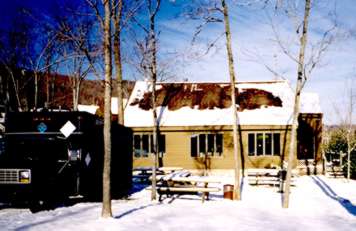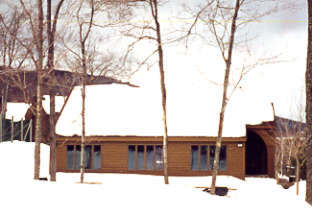 |
 |
 |
|
|
|
|
|
|
|
|
|
Snow, Frost and Dew Pattern Testing and Documentation
|
Snow, frost and dew pattern analysis is a technique used in conjunction with other tests such as an infrared scan to identify problems in the roof assembly insulation. The presence of snow and frost-melting patterns on a roof can indicate attic warming.
Attic warming is started when warm air leaks into the attic assembly and melts the snow on the roof, causing bare patches on the roof slope as in figure 1. Melting snow on the warm areas of the roof forms melt water that flows down the roof until it reaches the colder area of the roof near the eaves. The melt water hits the snow that remains at the eaves and refreezes to form ice dams. Ice dams prevent proper water drainage and can lead to roof leaks.
Figure 2 is showing the same building as in figure 1, but after the roof assembly has been properly insulated. The even blanket of snow across the whole roof indicates that heat is no longer rising through the attic and causing snow melt which can lead to ice dams.



